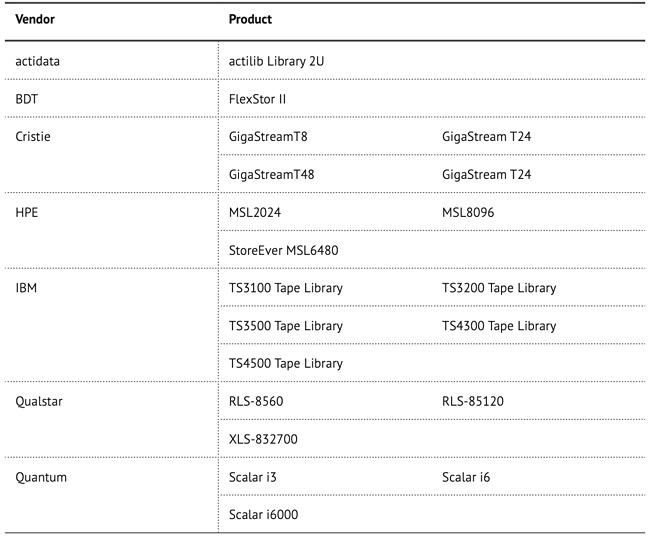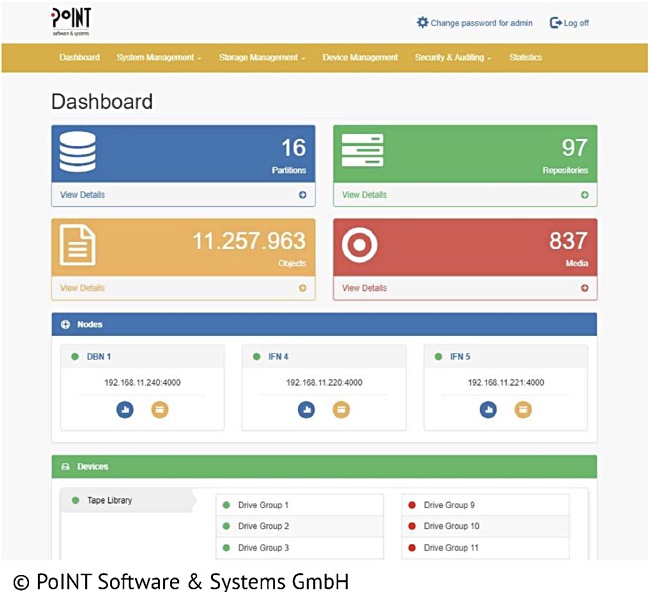Our recent article about Fujifilm’s Object Archive software, which will support object data on its magnetic tape, prompted PoiNT Systemes to get in touch.
The German firm’s S3-enabled Archival Gateway software already pumps excess object data to tape, thus saving more expensive disk capacity.
Yesterday the company added support for IBM TS3500 and TS4500 libraries, “covering both LTO drives and IBM 3592 series models” via the release of Version 2.1 of the software.
Founded in 1985, PoINT originally developed archive storage on optical disks – and for a few years it was owned by Digital Equipment Corp. Today, independently owned PoINT develops storage management software and an archive gateway to move object storage data to tape using the S3 protocol. There are solution briefs for NetApp StorageGRID and Cloudian’s HyperStore and customers include Daimler, Bayern Invest, SiXT, ReiseBank and WAVE Computersysteme.
Archival Gateway
PoINT Archival Gateway features erasure coding, parallel access to tape drives for high throughput rates and multiple library support for high capacity scaling. It supports up to 256 tape drives (LTO or IBM 3592) and eight libraries and can pump data at 230GB/sec. That mean13.8TB/min, 828TB/hour, and realistically can go past 1PB/day.
The software runs on redundant server nodes. Using its own format, it saves blocks of data redundantly on different tape cartridges so that data is not lost, should one cartridge fail. Object data is stored natively, with data and metadata preserved. This means objects are restored without conversion or rebuild processing.
The software supports multiple tape libraries:

PoINT Archival Gateway is described in a white paper. It has two instantiations: interface nodes which link to accessing client systems; and database nodes which look after target tape systems. These nodes run separately from each other and multiple copies can be executed, providing parallelism. Accessing clients link to the gateway across Ethernet. The gateway then links to the tape libraries using Fibre Channel or iSCSI.
PoINT told us it will support the Fujifilm object initiative. Software engineer Manfred Rosendahl said: “Currently the PoINT Archival Gateway uses its own tape format to provide features like erasure coding, which is not possible with the previously available formats like LTFS. We’ve been talking to Fujifilm for some time now and we will also support the new OTFormat in future releases of PoINT Archival Gateway.”








